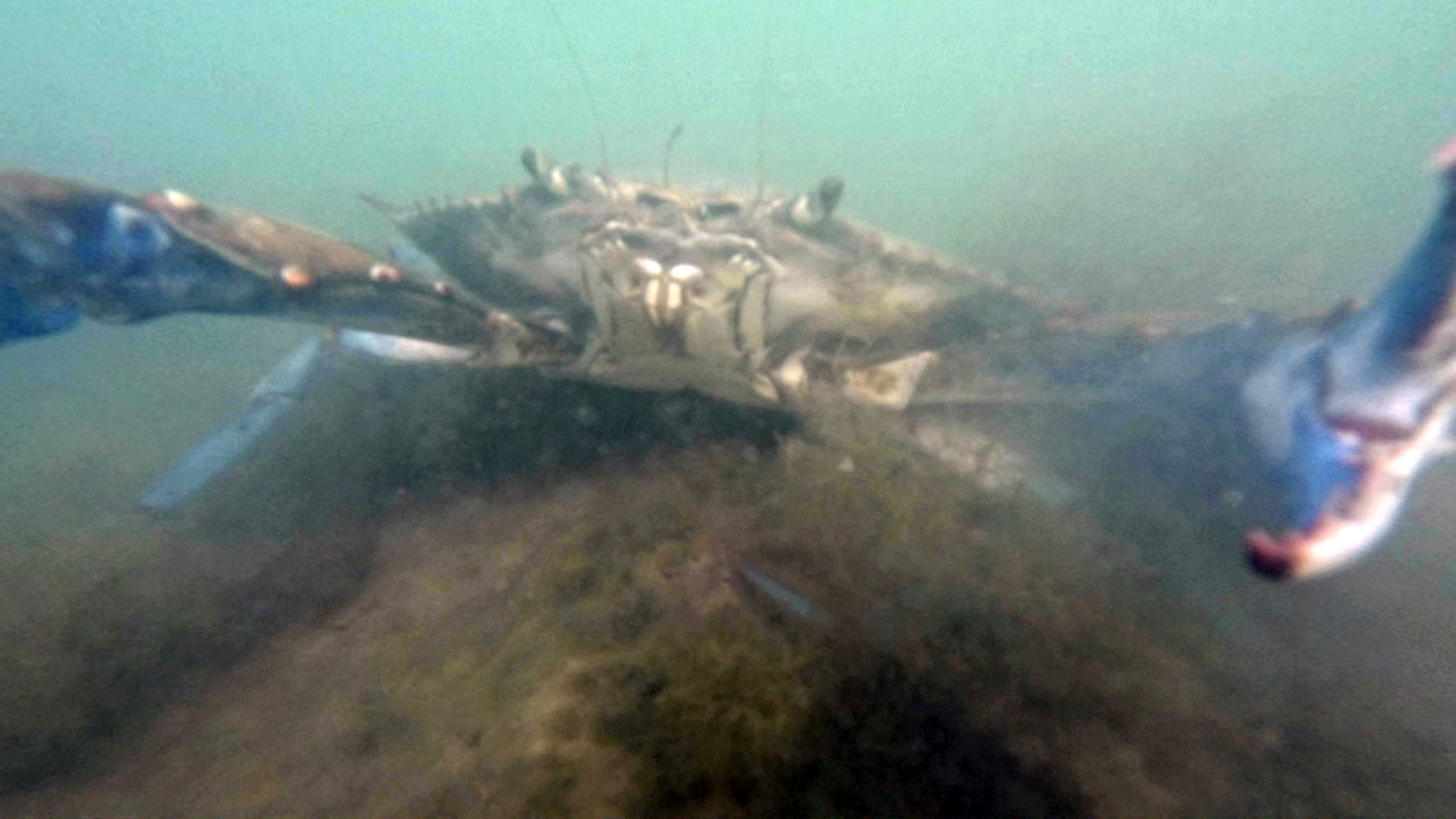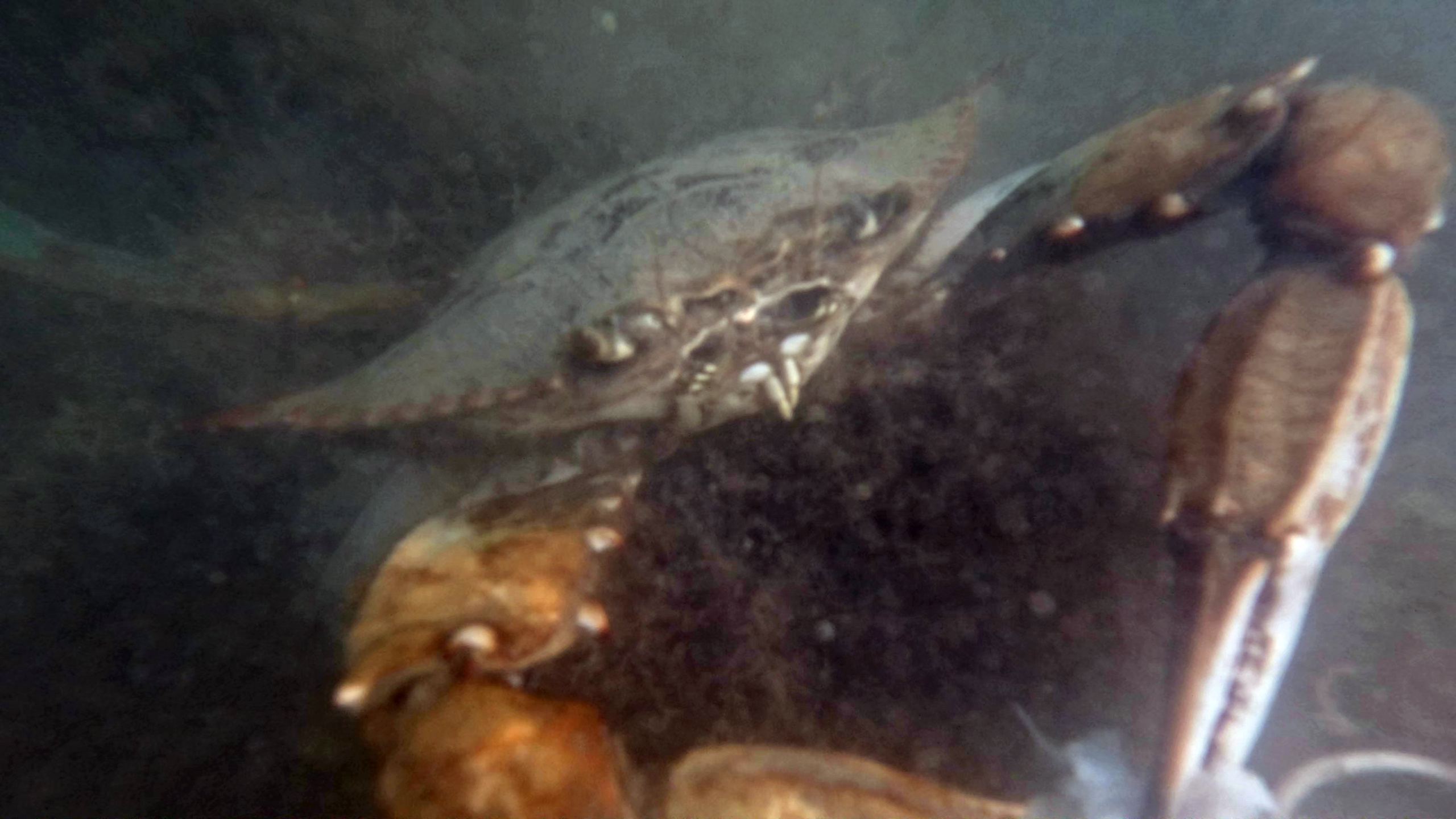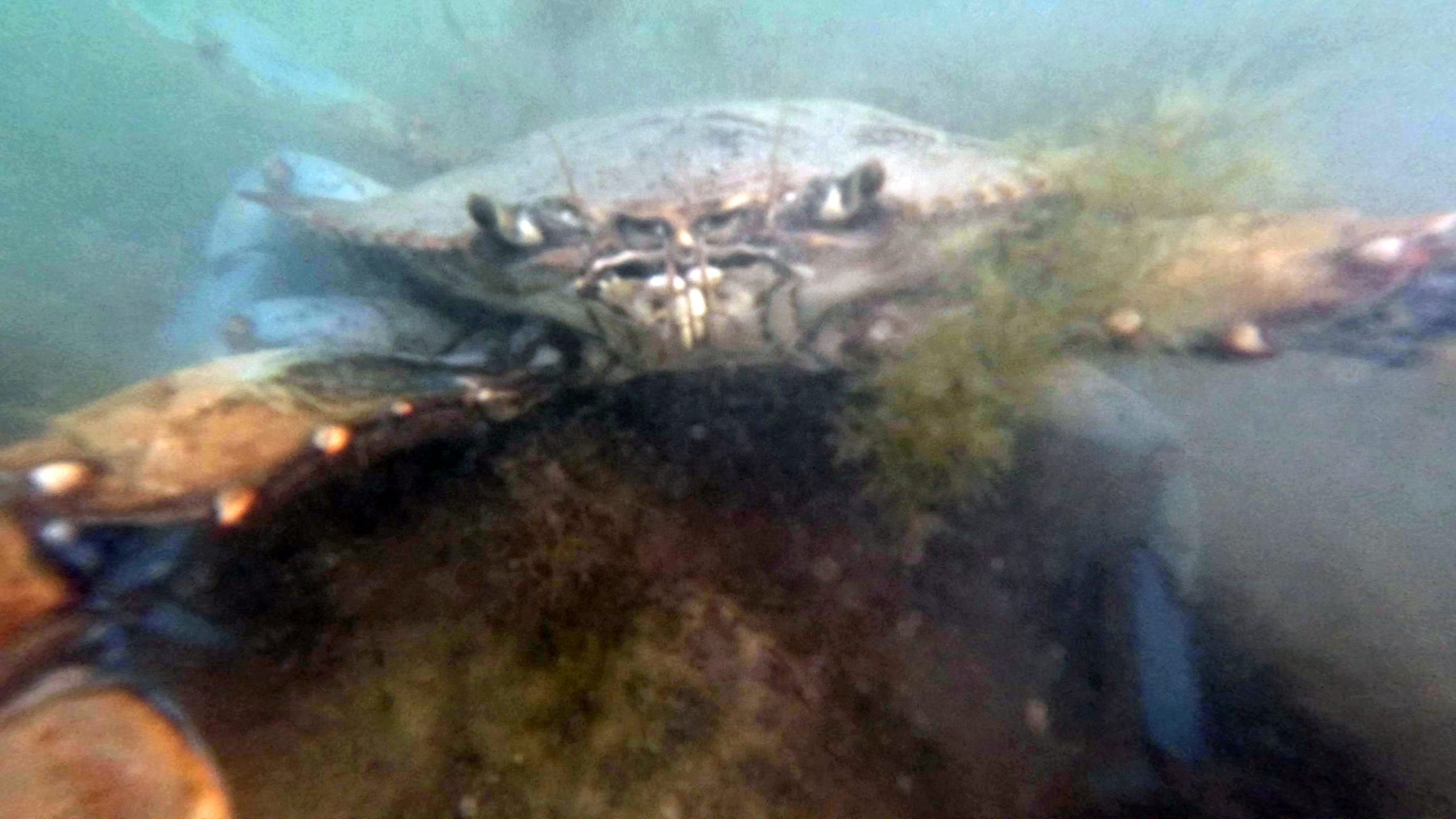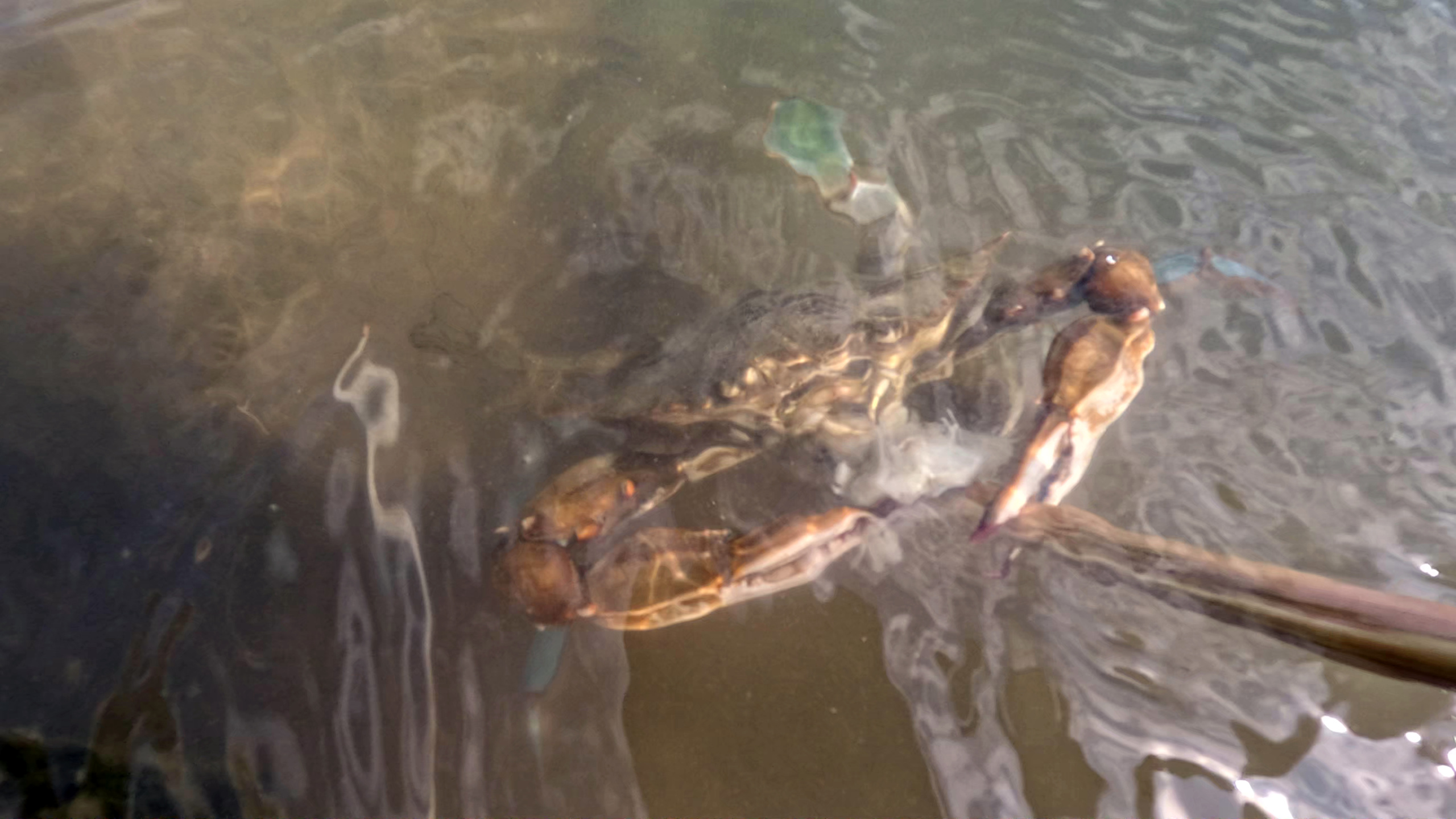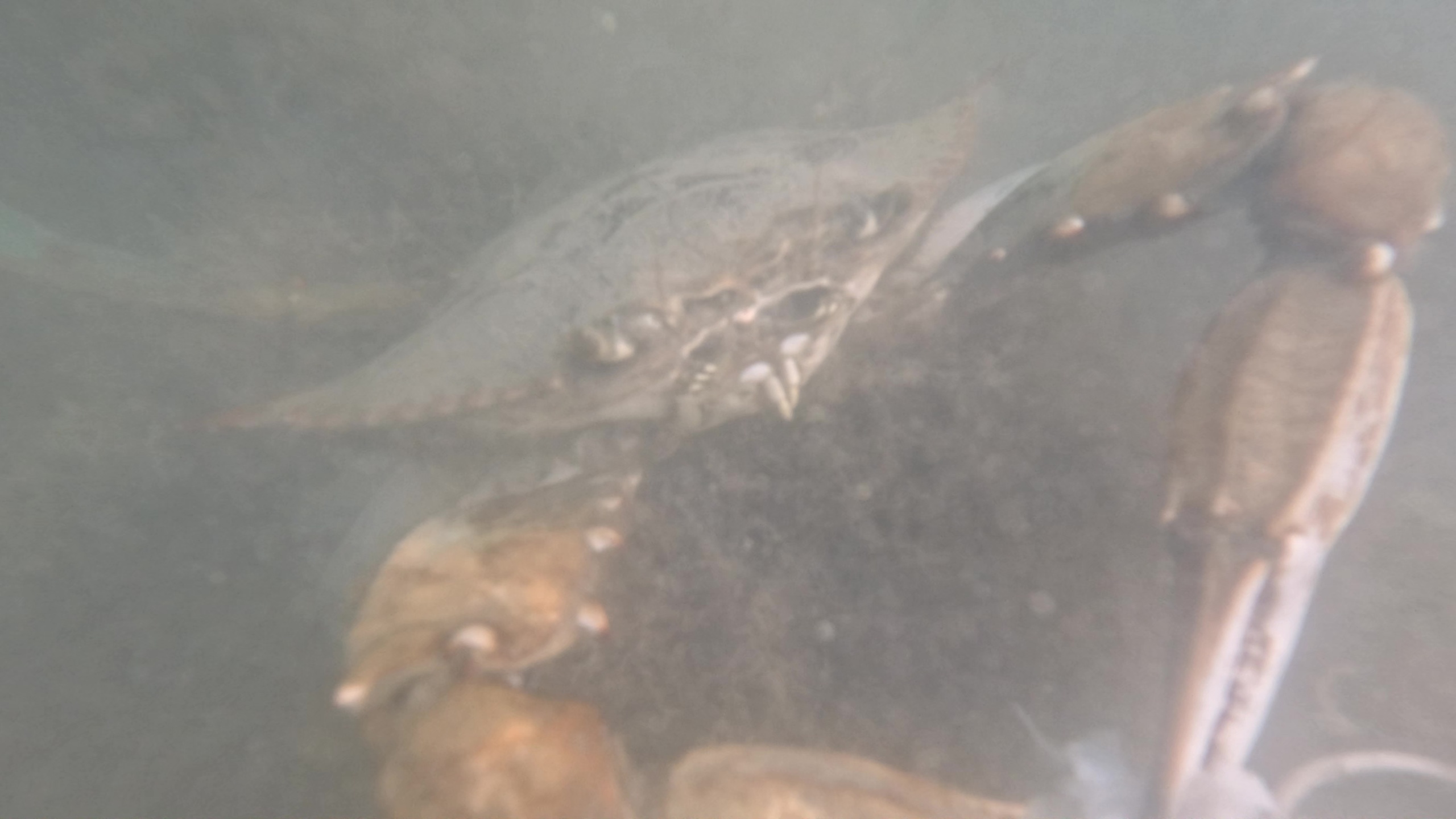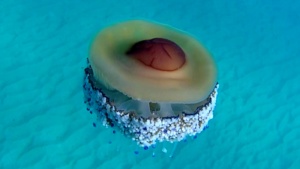Even we at intotheblue.it could not miss the infamous and by now famous this summer, Blue Crab – Callinectes sapidus – also known as Blue King Crab. We filmed it after several reports, on the stretch of coast between Vada and Rosignano Solvay, luring it with a bait to film it with the camera.
This alien species has colonized the Mediterranean for at least fifty years but has spread by invading the coasts in recent years perhaps precisely because of the now inevitable warming of the waters of the Mediterranean Sea.
Blue king crab or blue crab (Callinectes sapidus Rathbun, 1896) is a decapod crustacean of the Portunidae family. Native species of the Atlantic coasts of the American continent, in recent years it is spreading also in the European continent.
Expansion of the area in the Mediterranean
In July 2008 it was reported in Italy, in Basilicata, at the mouth of rivers along the Ionian coast, on the Adriatic coast of Abruzzo and Puglia, and in the upper Adriatic from Goro to the Ferrara beaches.
In August 2019 some specimens were fished along the Cilento coast, in Ascea Marina di Velia (SA), and in Sottomarina di Chioggia (VE), they were also sighted in Roca Vecchia Marina di Melendugno (LE), Lesina and Peschici (FG). The species is rapidly spreading in the Valli di Comacchio and in the Ravenna area, where the calm and shallow waters have proved to be an ideal habitat for reproduction and growth. In September 2019, other specimens were sighted on the beach of Marina di Pisciotta (SA). Since November 2019 the specimens caught in this area have increased significantly.
In 2020 they were also spotted near the Gulf of Manfredonia, in Vieste. In Vasto and San Salvo in Abruzzo, in the seas of Sardinia, mainly in the lagoons of the province of Oristano (Marceddì), some specimens have been caught. Since 2020 it has also been present in Marsala within the Stagnone lagoon reserve where it is particularly prolific. Between November 2021 and February 2022 other specimens were caught by local fishermen in the Gulf of La Spezia precisely on the Lericina coast in front of San Terenzo.
https://it.wikipedia.org/wiki/Callinectes_sapidus
In August 2022 it was reported on the coasts of Lazio. In 2023 we can now say with certainty that it colonized the coasts of Tuscany in the province of Livorno.
It lives up to 35 meters deep, in waters with a very variable salinity, from 2 to 48 g‰, it resists without difficulty between 3 and 35 degrees, for this reason it is compatible with all environments, coasts, lagoons, estuaries. It is therefore spreading very quickly being a highly competitive species that can cause damage to ecosystems, in particular, it can become a competitor for the invertebrates with which it shares the habitat thanks to its strong aggressiveness and its great swimming capacity. Furthermore, it has a high fecundity and a long reproductive period; this means that the blue crab, in the presence of optimal environmental conditions for it, manages to have enormous reproductive success with a large number of specimens that lead us to events such as the last one recorded at the Orbetello Lagoon.
Among the negative effects, the impact on the algal species on which it can feed and also on fishing and production activities in general should also be highlighted. Above all with regard to fishing, there is damage to gear, such as nets and pots, and also to the catch remaining in the gear itself. For farms, on the other hand, their voracity leads to a reduction in the availability of the “raw materials” necessary for the development of fish species and to a reduction in juveniles.
https://www.arpat.toscana.it/notizie/2023/granchio-blu/il-granchio-blu-danno-o-risorsa
Gallery
 English
English Italiano
Italiano
